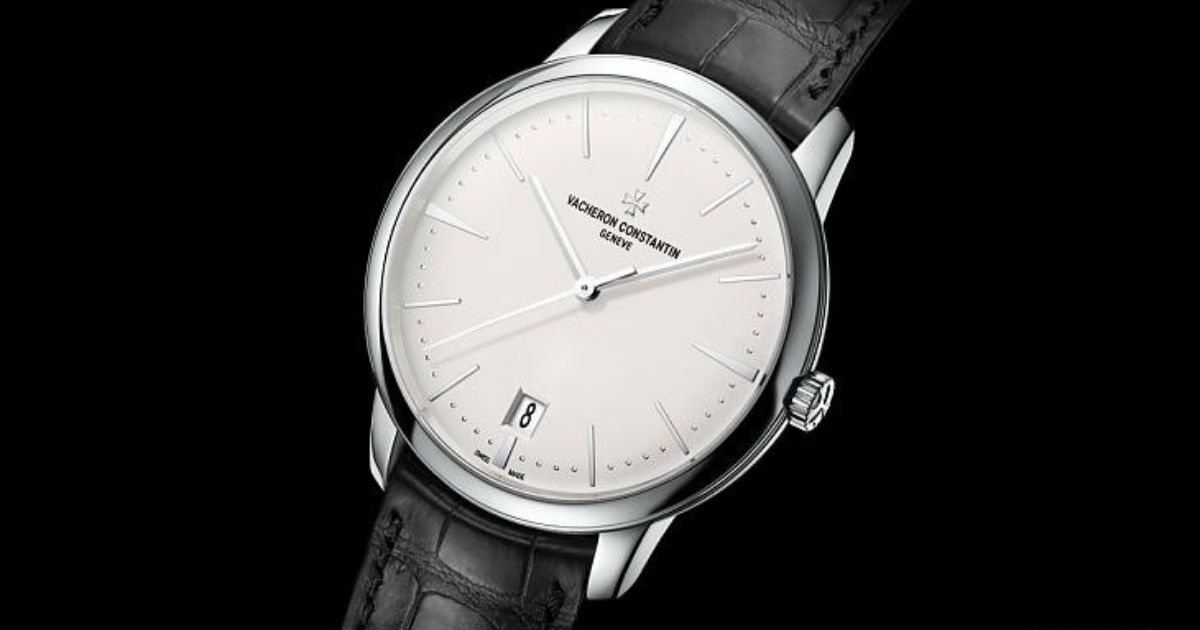Blog
A Legacy in Motion: The Vacheron Constantin Story

In the rarefied world of haute horology, where history is currency and innovation is the price of entry, few names command as much reverence as Vacheron Constantin. To speak of this manufacture is to speak of the very evolution of the watchmaking art. It’s a story not of a company, but of a continuous, unbroken legacy—a legacy perpetually in motion.
Founded in 1755 by Jean-Marc Vacheron, just 24 years old at the time, in the republic of Geneva, this house holds a title that is both a badge of honour and a testament to its resilience: the world’s oldest watch manufacturer in continuous operation. For over 265 years, through revolutions, wars, and economic upheavals, the flame of its craft has never been extinguished. But this is not a story about resting on laurels. It is a story about how a deep respect for tradition fuels a relentless drive toward the future.
The Foundational Ethos: “Faire mieux si possible”
The guiding principle of Vacheron Constantin, established in 1819 by François Constantin, a partner who brought commercial genius to the technical mastery of the brand, is the elegant and demanding motto: “Faire mieux si possible, ce qui est toujours possible.” “Do better if possible, and it is always possible.”
This is more than a marketing slogan; it is the DNA that courses through every timepiece. It’s the reason why a Vacheron Constantin watch is not merely a instrument for telling time, but a holistic expression of art. It demands excellence in three key areas:
- Technical Mastery: From the simplest time-only calibres to the most breathtaking grand complications—perpetual calendars, minute repeaters, and tourbillons—the technical execution is flawless. The movements are engineered with a focus on longevity, precision, and refinement.
- Aesthetic Brilliance: A Vacheron Constantin is instantly recognizable for its elegant, often understated, design. The cases, most famously the cushion-shaped “Historiques” and the multi-faceted “Overseas,” are studies in balanced proportion. The dials are masterpieces of legibility and texture, from grand feu enamel to intricate guilloché.
- Decorative Art: This is where the soul of the watch is revealed. The movement components are finished by hand to the highest standards: inward and outward angles are sharply defined, bridges are adorned with Côtes de Genève, and edges are beveled and polished to a mirror shine. This commitment extends to the métiers d’art—engraving, enameling, gem-setting, and guilloché—turning the watch into a miniature canvas.
Pillars of the Collection: A Tapestry of Time
To understand Vacheron Constantin is to explore its core collections, each representing a different facet of its philosophy.
- The Patrimony: If you seek pure, unadulterated classicism, look no further. The Patrimony collection is the essence of dress watch elegance. With its slim profiles, clean dials, and minimalist aesthetics, it embodies the principle that true luxury is quiet and confident. It is a watch that speaks to the connoisseur, showcasing perfection in its most restrained form.
- The Overseas: Launched in 1996, the Overseas is Vacheron Constantin’s answer to the luxury sports watch. But it is an answer given with a distinctively Vacheron inflection. It is not overtly rugged or aggressively styled; instead, it offers a sophisticated, versatile elegance. Its signature Maltese cross-inspired case and bracelet links are instantly iconic. What makes it truly special is its user-interchangeable strap system, allowing the wearer to seamlessly switch from metal bracelet to leather or rubber strap, adapting the watch from a sporty companion to a formal accessory in seconds.
- The Historiques & Métiers d’Art: These collections are the heart of the brand’s historical dialogue. The Historiques line reinterprets iconic vintage models from the brand’s extensive archives, bringing classic designs like the Cornes de Vache or the American 1921 into the modern era with contemporary movements. The Métiers d’Art collection, however, is where Vacheron Constantin transcends watchmaking to become high art. Here, time itself becomes secondary to the story being told on the dial, through techniques like flinquée enameling, paillonné enameling, and stone marquetry, often depicting historical maps, legendary figures, or celestial charts.
Les Cabinotiers: The Apex of Personalization
For the ultimate expression of “doing better,” we look to Les Cabinotiers department. In the 19th century, cabinotiers were the master artisans who worked in the attics (cabinots) of Geneva, creating unique and highly complicated timepieces. Today, this name signifies Vacheron Constantin’s bespoke and ultra-complicated watch division. This is where the impossible is made real—where unique grand complication pocket watches, one-of-a-kind wristwatches with astronomical functions, and artistic masterpieces are born. A Les Cabinotiers timepiece is the culmination of centuries of knowledge, a singular object created for a single individual.
A Living Legacy
What does it mean to wear a Vacheron Constantin today? It means wearing a piece of history that is very much alive. It means being connected to a lineage of artisans who, for over a quarter of a millennium, have believed that “better is always possible.” It is not a watch that shouts for attention; it earns respect through a quiet conversation of details—the way the light catches the polished bevel, the satisfying click of the crown, the mesmerising sweep of the seconds hand.
In a world of fleeting trends, Vacheron Constantin remains a beacon of permanence and progression. Its legacy is not locked away in a museum but is worn on the wrist, a constant, beautiful reminder that the greatest traditions are those that never stop moving forward.























































